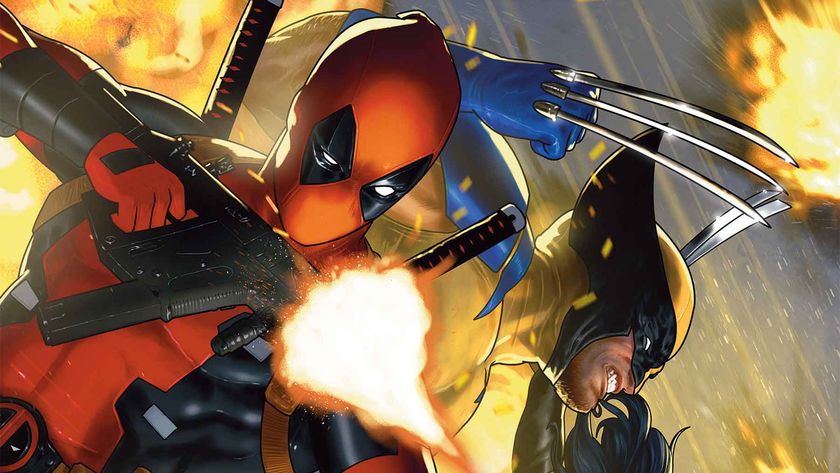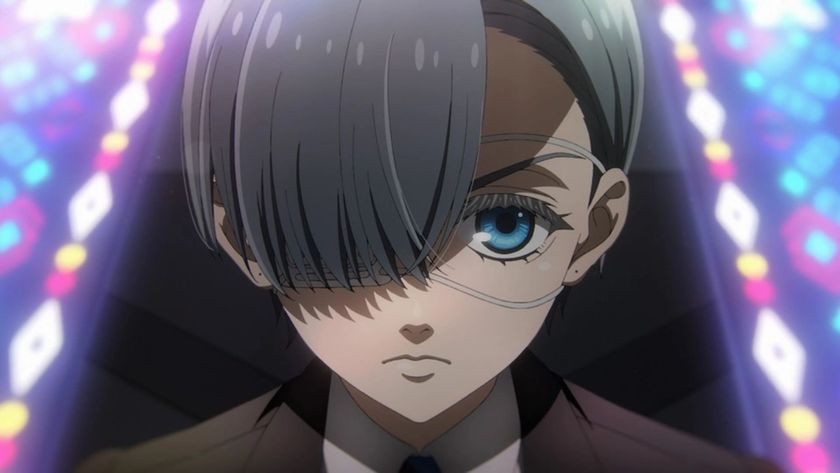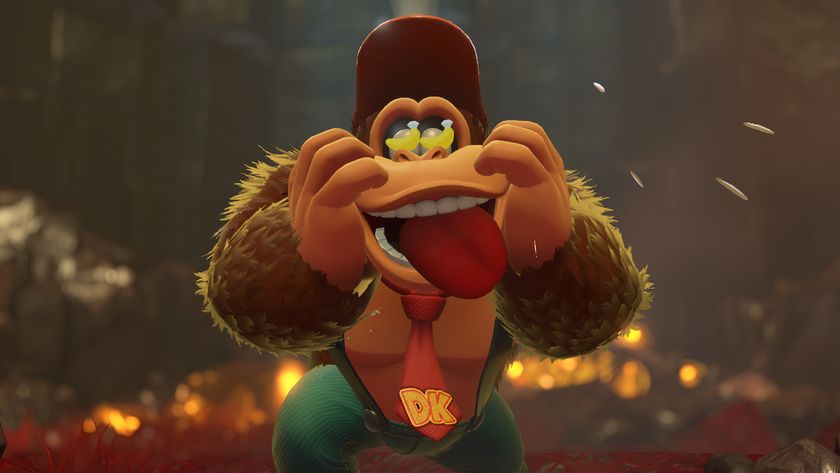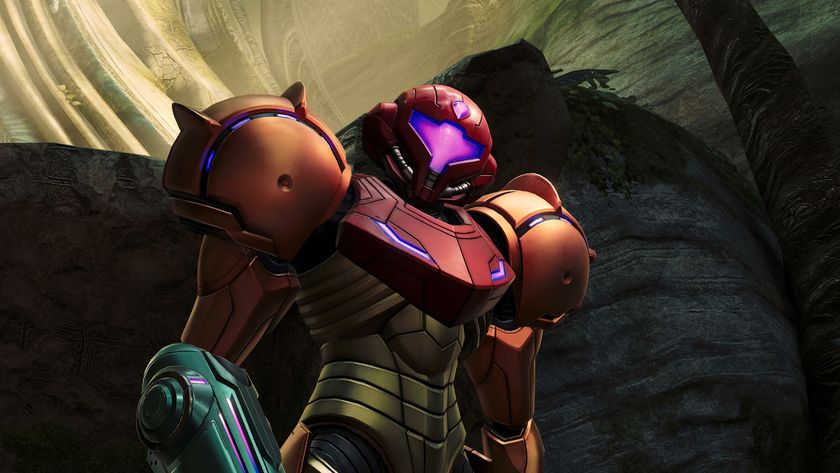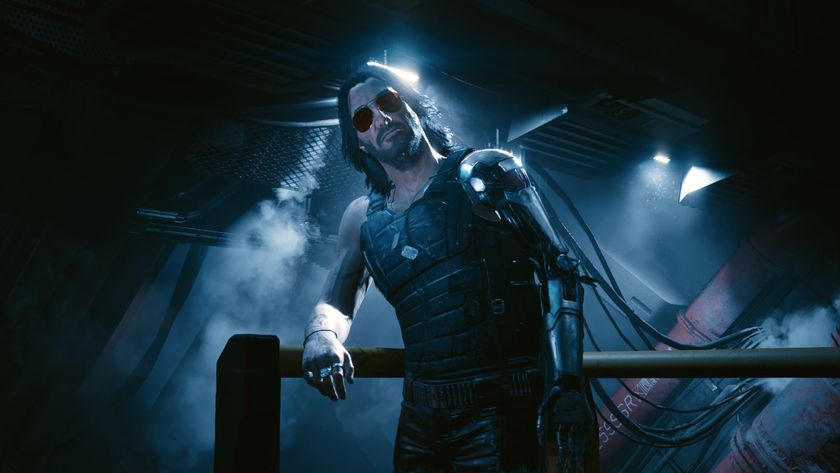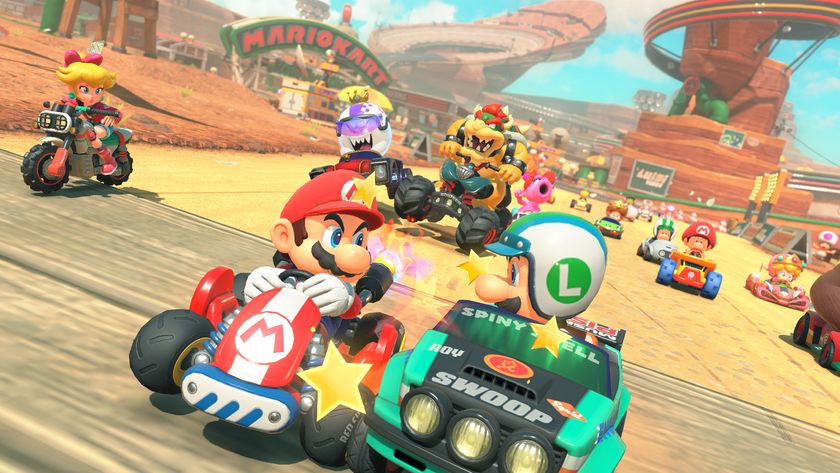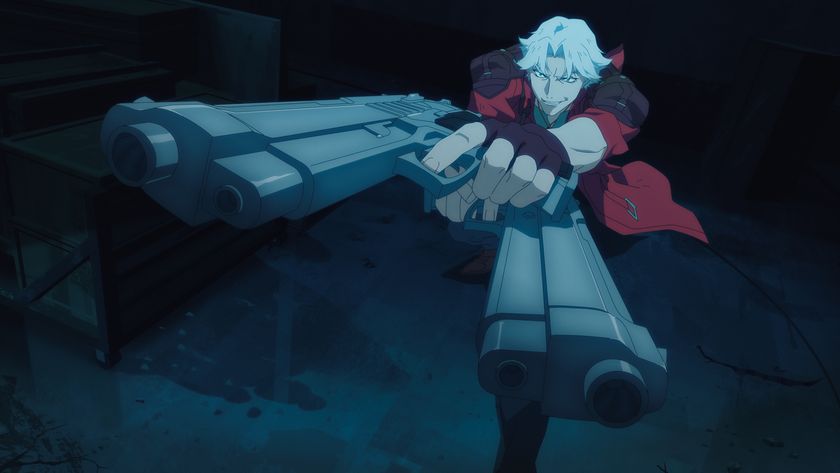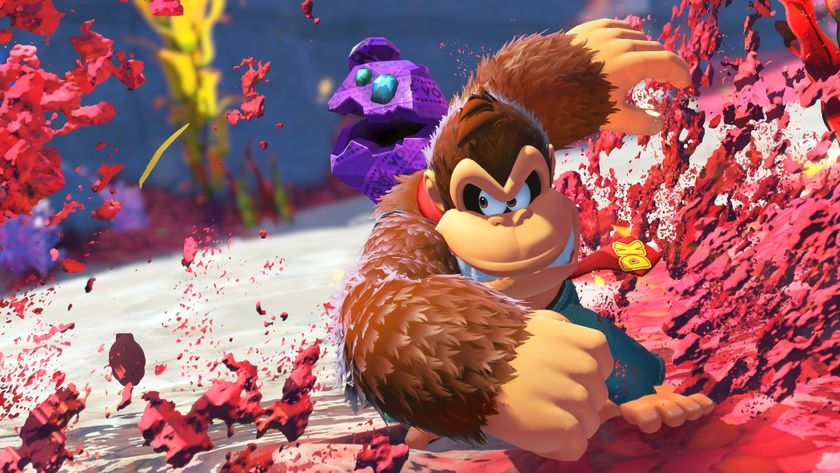Best Shots review - Wonder Woman: Earth One Vol. 1 "provocative"
Wonder Woman: Earth One offers us a provocative and highly contrasted view that we have not seen before
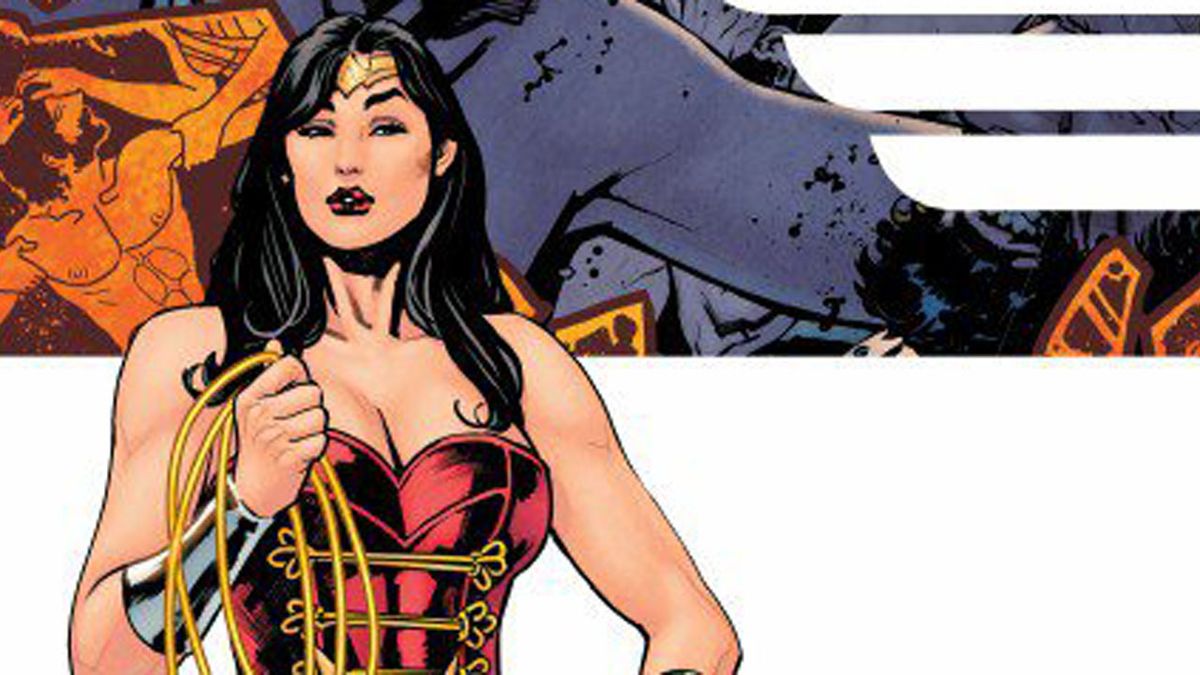
The hype and anticipation for Wonder Woman: Earth One has felt insurmountable. Many have been dying to read it, wondering how Grant Morrison would treat Diana, Princess of the Amazons. With his signature panache and irresistible layers of metaphor, Morrison has treated her graciously. He has given great consideration to her intricate history, and the philosophical and literal representation of the character's original intention. Wonder Woman: Earth One offers us a provocative and highly contrasted view that we have not seen before — and I'm not just talking about this book's vagina-inspired Invisible Plane.
Written by Grant Morrison
Art by Yanick Paquette and Nathan Fairbairn
Letters by Todd Klein
Published by DC
'Rama Rating: 9 out of 10
Yanick Paquette has created delightful imagery of a utopia of Wonder Women. From costume to character, there is a futuristic yet traditional aesthetic at play, as well as broad swaths of cultural representation. The architecture and landscape of Paradise Island are beautiful and interesting, very much like a science-fiction Greek isle. It is a pristine, peaceful, and highly evolved place where we meet our Princess Diana. It feels like Paradise. Why would Diana ever want to leave? Meeting Morrison's Etta Candy is one good reason! But really, her origin demands it, and Morrison honors that.
When Diana takes her inevitable sojourn into Man's World, it is colored with a very real culture shock, giving way to humor and thought-provoking perspective. It is in these moments that Morrison turns camp and kitsch into potent allegory. He does so most importantly through the supporting characters of Etta and Steve Trevor, who both shine and surprise in incredibly compassionate ways. Morrison fleshes them out to be wonderfully self-identified rebels in their own right who serve to inspire and expand our heroine.
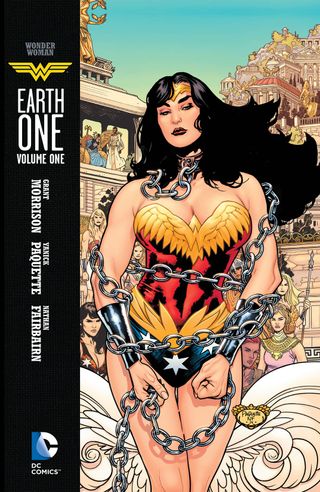
Diana has lived her entire life on the island, only knowing her sisters' struggle through tradition and ethos. Thus she is adventurous, but not foolish. She is wise, but still curious. Diana is clever, compassionate, and strong... but she is also frustrated. Her purpose and existence have been created by her external world and her mother, and now she is compelled to find her own way. Carrying the weight of her history, Diana's struggle is to define herself, much like her mother before her.
While we are used to seeing Diana as a pillar of strength, the visceral opening sequence of Wonder Woman: Earth One, skillfully elaborated by Paquette and colored perfectly with sharply opposing orange and blues by Nathan Fairbairn, presents a jarring view of the Queen of the Amazons on her knees in the filth of pigs. Hippolyta is subject to Hercules' misogynistic and sexually violent display of power over the Amazons, who are all caged in the background. They are the spoils of war. Paquette draws Hercules' massive body taut and grisly, standing with his groin on full display. His language is grotesque and degrading as he boasts of his "victory" while pulling Hippolyta close with intent to penetrate her.
Just as sure as his arrogance, is his defeat. With the chains that bound her, Hippolyta ends his breath and breaks the chains saying, "No more." It is an instinctually gratifying scene. It serves as one of many homages to co-creator William Moulton Marston and the spirit of the Amazons, as well as a concrete foundation for the story that follows. In a most literal way, the Amazons cast off the "yoke of men." They take what is rightfully theirs: their lives, their bodies, and their autonomy.

Wonder Woman: Earth One Volume 1


Grant Morrison understands power, culture, and sexuality unfettered by conventions of gender, and it allows him to render this iconic heroine with fresh but familiar eyes. The Amazons of Paradise Island are shown living, playing, dancing, healing, and ruling in what most would call unconventional ways, and with a reverent exchange of power and submission. This is the theme that runs through every facet of character and plot, but it is displayed best in the mother-daughter dynamic between Hippolyta and Diana. Morrison creates a flawless rendition of an age-old power struggle.
Comic deals, prizes and latest news
Get the best comic news, insights, opinions, analysis and more!
A mother does what she believes she must to protect her daughter because she has seen and felt the vicious hand of oppression. Diana does not know that oppression because she has had the privilege of growing up on Paradise Island, and now she is thirsty for freedom, change, and an identity of her own making. Through this lens, Morrison demonstrates the ills of the patriarchy. He and Paquette go so far as to display a woman bent over on her knees, lapping from a bowl in Hippolyta's mirror to Man's World (an overt call to Greg Horn's undignified pinup of Catwoman) in an effort to deter Diana's will. Morrison can't help but dance near the fourth wall in such a way to suggest that comic books too are plagued by the barbarity of gendered power structures, but this comic will challenge that. And Diana can't help but go see that world for herself.
For her act of defiance, Diana chooses to face the consequences. She returns home, bound by chains. Again, Paquette's labile imagery serves Morrison's multilayered intent with precision. It is an act of personal power to submit willingly to those that they trust, and sometimes change can come from peace, not war. The Lasso of Truth touches Diana, Etta, and Steve as they tell their stories, and Paquette weaves that golden rope through the panels of the pages in honor of the power of submission and for the thread fate. In the end, we are faced with an eternal question: Do we submit to tradition or submit to our inner voice?
Wonder Woman: Earth One is a story of war and peace, power and compassion, men and women, of a mother and her daughter and sisterhood. For many, it will not be what you expect, and for some readers, it won't be what you want in a comic. Except, Wonder Woman: Earth One is exactly what we need. I invite you to submit to the vision of Morrison and Paquette, as it is a truly singular interpretation of our Wonder Woman.
Vanessa Gabriel does marketing, communications, and design things by day and comic nerd things by night. She's written comic reviews for over a decade but has opined on the portrayal of Wonder Woman for much, much longer.
